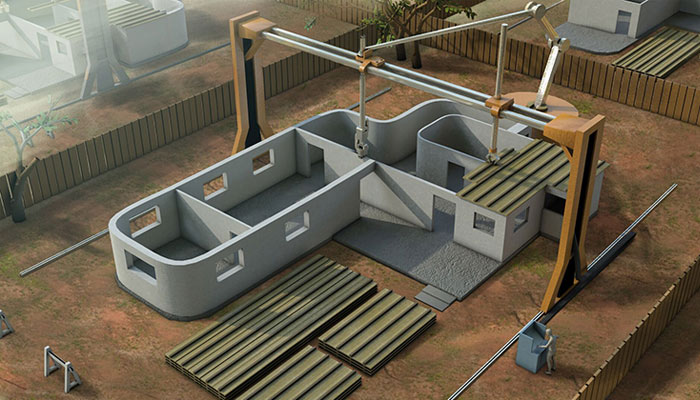As we navigate through the evolving landscape of innovation, one discovery stands notably in the sector of building: 3D manufacturing. This exceptional technology is reshaping the manner structures and structures are conceived and built, introducing a new phase of effectiveness, environmental responsibility, and innovation.
Reshaping Infrastructure: One Layer at a Phase
The integration of 3D fabrication in infrastructure offers numerous game-changing advantages. Foremost among these is the substantial reduction in substance waste. Conventional construction methods typically result in considerable waste resources that add to sustainability-related pollution. In comparison, 3D fabrication utilizes a meticulous layer-by-layer approach, consuming only the required portion of substance and thus minimizing surplus substantially.
Another noteworthy advantage is the remarkable reduction in development time. Undertakings that traditionally require long periods can be finished in a segment of the time with 3D printing innovations. This time reduction is due to the mechanized nature of 3D machines that can work 24/7 without human intervention, considerably minimizing complete construction deadlines.
Moreover, 3D fabrication opens up prospects for developing complex, tailored structures at no additional cost. The flexibility of 3D printers enables for detailed frameworks and shapes to be produced that would either be exceptionally pricey or impossible to achieve with traditional construction methods. This capability not only elevates structural visual appeal but also permits builders to improve plans for superior efficiency and longevity.

Reducing Costs and Enhancing Reachability
Cost reduction is yet another significant benefit delivered by 3D printing in infrastructure. By cutting workforce expenses and decreasing the duration required to finalize projects, the overall expenditure associated with developing edifices is minimized. Moreover, affordable 3D printing devices are becoming more accessible, placing this method attainable for smaller firms and independent creators eager to discover its capabilities.
The affordability of these units also opens opportunities for innovation in associated areas such as clothing manufacturing. While primarily recognized in construction industries, the reach of 3D fabrication expands into numerous fields including design. Here, designers explore with 3D printed garments, challenging creative boundaries and reshaping fabric handling while benefiting from low manufacturing expenses.
An Eco-Friendly Future Powered by Technology
Sustainability is another pillar of this innovation’s appeal in the infrastructure sector. 3D fabrication promotes a sustainable method to development by minimizing substance waste and resource consumption. Furthermore, it enables the integration of eco-friendly resources like reclaimed polymers or blended materials, which additionally decreases the carbon effect of this historically resource-intensive industry.
The international shift in favor of sustainable practices finds a powerful supporter in 3D printing innovations, potentially transforming how structural regulations and criteria are established moving ahead. By adopting these innovative techniques, the construction field advances toward realizing greener operational strategies.
Bringing Dreams to Existence
Visualize neighborhood hubs in disadvantaged areas being erected within a short time to serve pressing requirements or designers designing wonders reminiscent of natural patterns that harmonize effortlessly into their surroundings – such scenarios are not merely hypothetical but are fast becoming possible through 3D manufacturing.
While these breakthroughs mark just the onset, they indicate a era where development integrates perfectly with both cultural ambitions and environmental stewardship.
If we proceed on this course, infrastructure will not only represent the physical development of environments but also represent a dedication to creative approaches and sustainable practices. Bridging creativity with practicality, 3D fabrication is ready to reshape our physical world in forms we are just starting to to comprehend.
Through ongoing progress and an adoption of these cutting-edge methods, our constructed environments will certainly transform into manifestations of collective brilliance driven by the precision and boundless potential of 3D printing.
To get more information about may in soi nhua explore this webpage: check here
